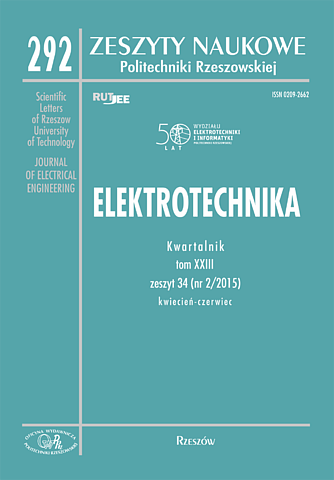Abstract
The authors’ research on the possibility of approximation of fractional order units by transfer functions of integer order proved that representation of fractional integral unit in the NINTEGER package with high approximation order (n ≥ 5) is consistent with the results of approximation by Oustoloup transformation. As for the integral unit, there is a leap in its transition function which is not characteristic of integral regulator. To tackle this issue, we have proposed the modification of Oustaloup method, in which the order of a numerator polynomial is reduced by one. With the aim to calculate the accuracy of such representation, the research was done on the possibility of neglecting one zero in the resulting transfer function of integer order by means of reducing the numerator polynomial order by one or by exclusion of the item with the highest degree of s operator. The accuracy of the NINTEGER and Oustaloup models is almost the same, but the Oustaloup method is implemented in MATLAB program while the NINTEGER model is put into effect in MATLAB Simulink. Thus, the simulation results with the use of Oustaloup model are recorded in MATLAB memory, which facilitates their analysis. It should be noted that the Oustaloup method enables to easily implement fractional controllers because of the relative simplicity of calculation procedures, although the accuracy of the model is not high.
References
[2] Duarte Pedro Mata de Oliveira Valerio. Ninteger v 2.3 Fractional control toolbox for Matlab. User and programmer manual. Universidade tecnica de Lisboa instituto superior tecnico. 2005. pp. 96
[3] Dzieliński A., Sierociuk D., Sarwas G.. Some applications of fractional order calculus A. Bulletin Of Polish Academy Of Sciences. Warsaw: Technical Sciences, vol. 58 (4). 2010. pp. 583 – 592.
[4] Fortuna L., Graziani S., Muscato G., Nunnari G., Porto D.. Approximation of HighOrder Lumped Systems by using Non-Integer Order Transfer Functions. Proc. of the 7th Mediterranean Conference on Control and Automation (MED99). 1999. pp. 2222–2230.
[5] Leon O. Chua. Fractional order systems. Modeling and control Applications. World scientific series on nonlinear sciences. Series A. vol.72. Chapter 1. Fractional Order Systems. pp. 1-32.
[6] Maiti D., Biswas S., Konar A. Design of a Fractional Order PID Controller Using Particle Swarm Optimization Technique. Proc. 2nd - National Conference on Recent Trends in Information Systems (ReTIS-08). 2008. p.5.
[7] Marushchak Y.Y., Kopczak B.L. Ułamkowe standardowe formy stosowane do syntezy systemów elektromechanicznych. Czasopismo „Systemy elektrotechniczne i komputerowe.” Wydanie tematyczne „Problemy Automatyzowanego Napędu Elektrycznego. Teoria i praktyka”. „Technika”. Kijev. Wyd. 15(91). 2014. ss.57-60. (w j.ukrainskim).
[8] Mehdi Dalir. Application of fractional calculus. Applied Mathematical Sciences, Vol. 4, 2010, pp. 1021-1032.
[9] Podlubny I. Fractional Differential Equations/Mathematics in Science and Engineering. Vol. 198. -Academic Press. 1999. pp. 340.
[10] Wasilew W.W., Simak L.A.: Ułamkowe obliczenia i metody aproksymacyjne w modeluwaniu systemów dynamicznych, NAN, Kijev, ss. 256. 2008 (w j. rosyjskim).





